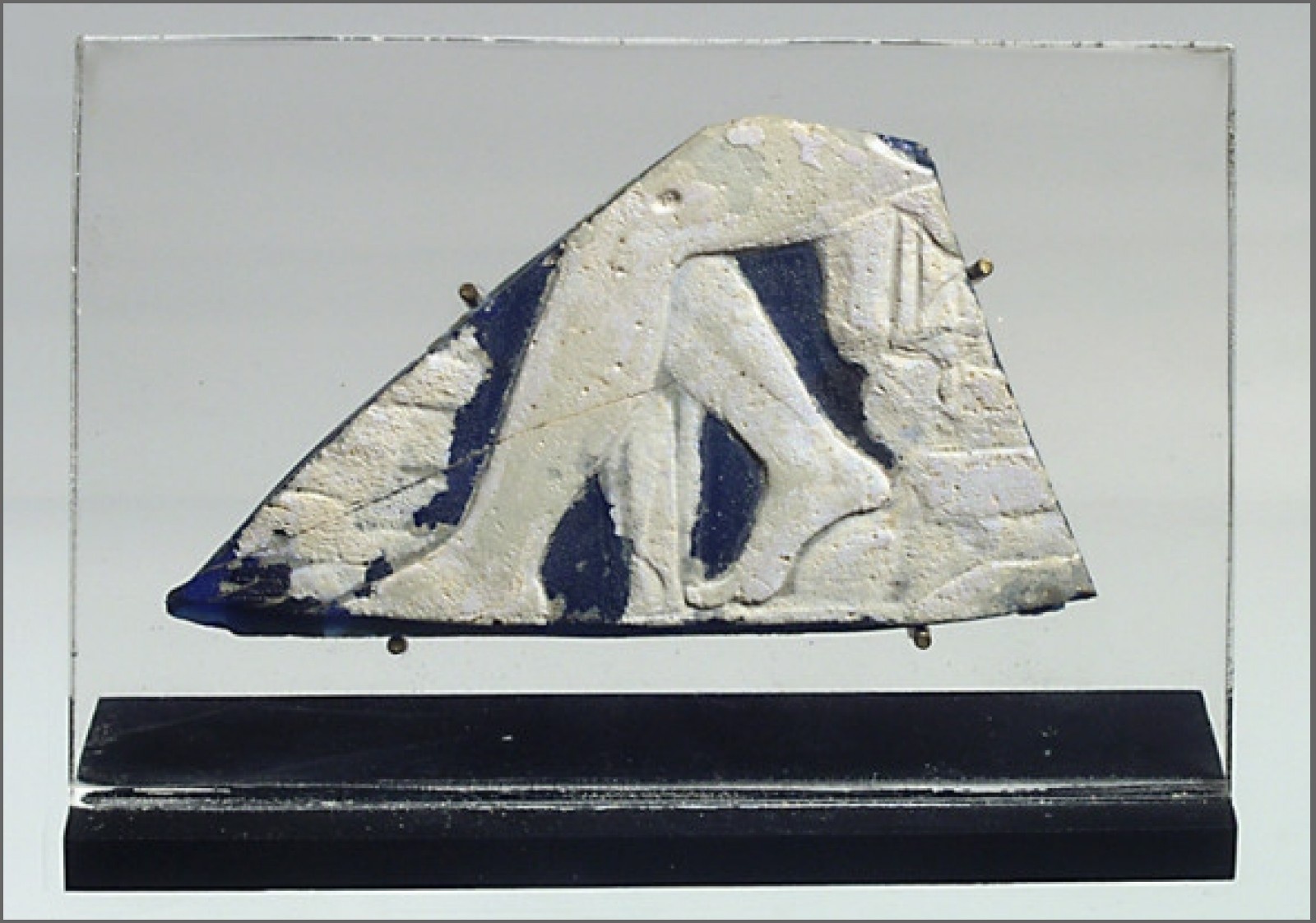
It’s August, perhaps you are already lying on a beach, drowsy with heat. If so, then maybe if you turn your head and squint through your sunglasses, you might see a pair of naked legs, just like these, belonging to a man sitting on some rocks.
This shard of Roman cameo glass has the quality of a photographic snapshot, a casual glance. For all its small size our curiosity is aroused, and we imagine a fuller scene: we note what appears to be horizontal layers of rock, the left leg held forward, foot flat to the ground, the right angled higher, its foot arched against the round base of the stone. The firm muscles of the legs indicate they belong to a seated youth; from under his left thigh folds of drapery cushion him. This much we can deduce.
But can we know more? Well, the legs are like a pair on the 'Portland Vase' in the British Museum, one of the most renowned pieces of ancient glass (images 2 & 3). However, far from being clear, the figural scene around the vessel tells an enigmatic story. Conceivably it depicts the world of the gods, possibly the marriage of Thetis to Peleus, or the meeting of Dionysus and Ariadne. Another idea is that it is a human, propaganda story: that the vase was commissioned by Octavian, and he is shown seated amongst various family members. If so, then it’s his feet we see resting on the slabs. After his defeat of Mark Anthony and Cleopatra (who may also be amongst the vase’s figures) Octavian became known as Augustus, so this holiday month is named after him - the ancient world presses itself close to us.
Regardless of our desire to seek answers, I enjoy this fragment for itself, with all its mystery; some things should always remain unexplained. Maybe, if you're still lying on the beach, you might turn your head back to where you last saw those legs, to find they have gone. The guy has wandered off, time has inexorably pressed on, the past is just out of reach; the sea glitters, the heat closes your eyes, and you sleep and dream.
Sold to a US Museum, 2006
Roman fragment of a cameo panel
Early 1st century AD
Length 7.6cm
Provenance
Giorgio Sangiorgi (1886-1965)